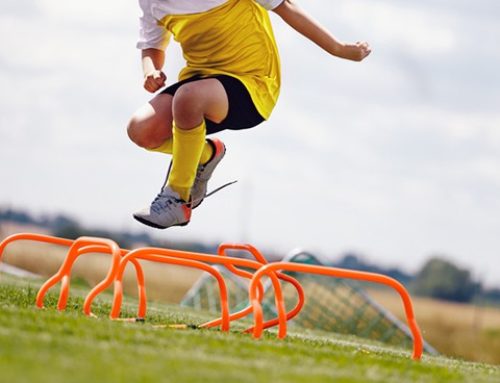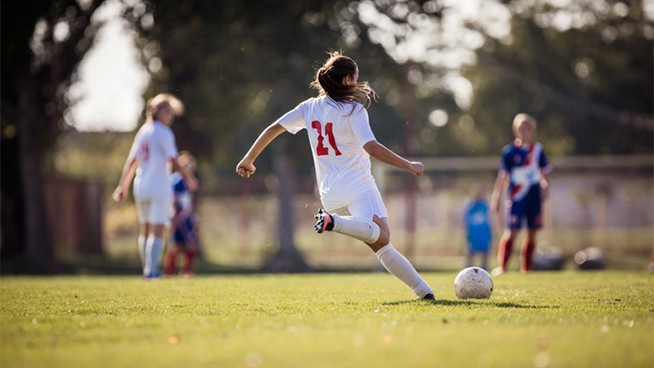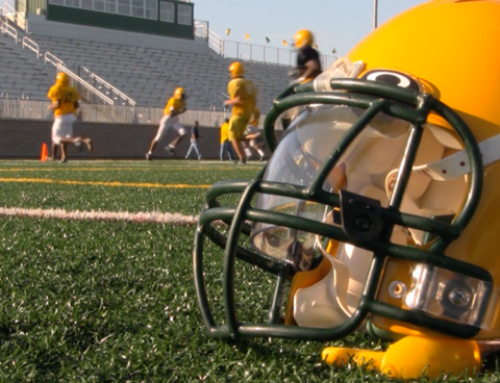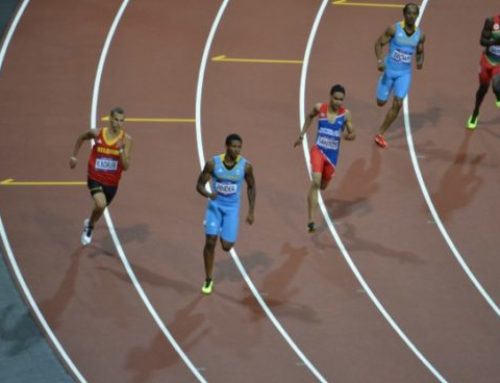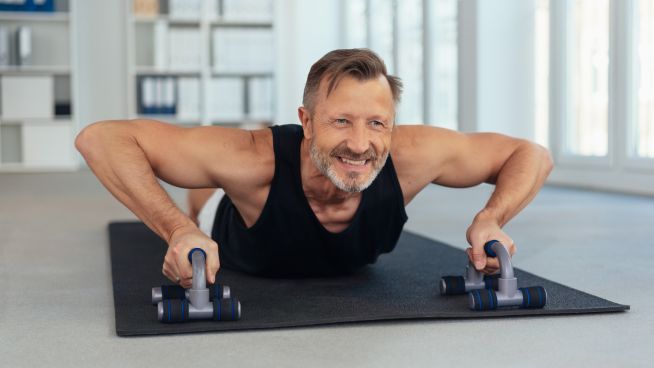Don’t Trash Your Speed Ladder: How to Get the Most Out of This Much-Maligned Training Tool
There have been several instances in my career when I learned that things I did as an athlete growing up were not as effective as I thought they were at the time. When I grew up, the speed (or agility) ladder was the thing. We used to blaze that ladder with footwork drills that we thought were, well, improving our speed and agility.
Turns out, it doesn’t quite work like that. But that is not news. If you’ve been around the strength and conditioning field for any amount of time, you can clearly see the ladder has almost been blackballed by the industry. People call it useless. People say it’s just for show—for social media likes. People say it actually makes you slower and less explosive. The pushback has been pretty extensive.
There is some truth to all of those things, but I like to try to see both sides of every divisive topic in this industry. I think a lot of things can work. I think there are a lot of right ways to do things. More right ways than wrong ways, at least. I think many times, “it depends,” is a suitable answer. At the same time, there comes a point when you must choose a topic where “it depends” and give it a simple yes or no answer. It’s OK to be bold on topics that many people do not agree with.
In the case of the agility ladder, I’m drawing a line in the sand. It’s useful. It can be, anyway. But before you exit out of this article and go have a meltdown to your other grumpy coaching buddies, hear me out.
What the Speed Ladder Can’t Do
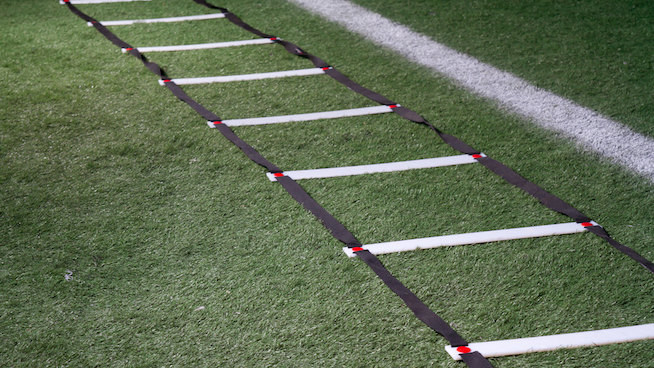
First, let’s look at some obvious stuff—what the speed ladder cannot do. The name is misleading, because the speed ladder alone will likely not make you faster.
What is speed? The rate at which an individual can run, horizontally on the ground. It’s stride length times stride frequency, mixed with power – which is (force x distance) / time. How fast can you apply force into the ground to propel yourself forward? How much force can you apply to the ground? How far can your stride take you and how fast can your strides occur?
In a nutshell, this is what makes speed. Nothing performed on the speed ladder can fully transfer to those formulas optimally. There is not maximal force application; it’s very light and rapid foot strikes. There is no maximal stride length, as the boxes on the ladder are usually no more than 20-by-20 inches. There may be some maximal stride frequency, but it lacks the force and stride length necessary to be suitable for sprint speed.
Plus, mechanics go out the window. Lack of arm drive and staring down at your feet the entire time? Yeah, run a slant route across the middle with that form. See what happens.
Another name used for this piece of equipment is the “agility ladder.” Another misleading name. Agility is an athlete’s ability to change direction at a rapid pace. A large part of changing direction is non-physical reaction, meaning you must assess a situation while you’re traveling one way and make a conscious decision to stop your momentum and redirect it into a completely different direction.
Yes, an agility ladder allows athletes to perform minor changes of direction drills at low impact rates, but it’s no question that the traditional programming involves no reaction-based performance. In other words, you know what’s coming next from the ladder drill. Ladder drills are rehearsed, choreographed and practiced as a skill, similar to dancing.
In a football game, you do not know what’s coming next from the middle linebacker. Agility can save you from being decapitated by the linebacker, but the ladder won’t teach you to react to real life situations. It just lays there while you practice your routine across it.
The most efficient way to improve speed is to increase strength and power. The stronger you are, the most power you can produce. The more power/force you can apply to the surface you run on, the faster you can move on it.
The most efficient way to improve agility is to increase your speed and reaction time. The faster you can react to a situation, mentally, in addition to how fast you can make body adjustments to that situation, the more agile an athlete can be.
But remember, I did say speed ladders can be useful…
What the Speed Ladder Can Do
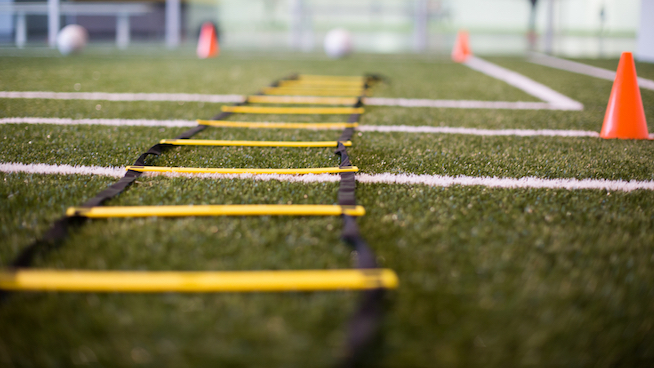
Do not throw away your ladders just yet. Just because it can’t directly make you faster or more agile doesn’t mean it’s useless. In fact, it still can serve a monstrous purpose in athlete programs. Nothing in fitness is one size fits all, so just because your favorite celebrity coach swears off the ladder, doesn’t mean you should, too. Different coaches, different athletes and different approaches.
The ladder can be a great warm-up tool for speed and agility workouts. Think of the ladder as a suitable appetizer for the main course, which is speed or agility work. The things that make this a terrible main course are exactly what makes it such a good appetizer (warm-up).
Drills often include low-impact, watered down versions of truly effective speed work. It helps raise body temperature, primes our joints/tendons and gets specific muscles activated that are going to be challenged at a higher intensity later. Add a few other correctives and dynamic stretches, and it sounds like that’s exactly what you’d want out of a warm-up.
The ladder can also be used with extreme effectiveness in populations lacking coordination skills. Really young athletes struggle a lot early in their training careers, and it’s usually not due to a lack of strength but more a lack of motor control. Lack of experience and coordination can present as weakness.
As a part of a warm-up, the ladder may be a great tool to help develop a cadence, rhythm and coordination. Eventually those characteristics will improve, and the athlete can progress to more advanced training without risk of injury. You know, rather than strapping a gangly 10-year-old to a speed parachute on his first day…
Another way you can maximize a ladder’s potential is to correct some of the flaws we’ve identified. For example, while performing “The Ickey Shuffle” up and down the ladder, give your athlete reactive cues like “red” and “blue.” Red means they plant their outside foot and crossover step over the ladder, finishing in an athletic stance. Blue means they plant their outside foot and transition into a pivot and backpedal.
Now your athlete has reacted to real-time situations on your command. The athlete doesn’t know which command is coming, or when, or if it will at all. Although it still doesn’t make the ladder the most optimal tool for true speed and agility work, it does help the athlete learn how to react to an unknown situation and do so in an explosive, forceful action.
The Verdict
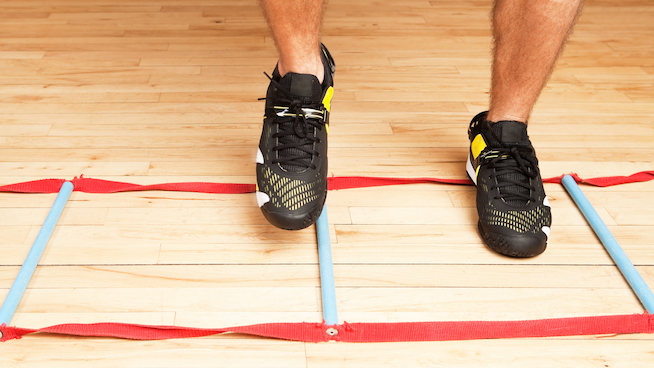
It’s clear that the agility ladder is not totally useless, however the usefulness is up to the coach and the athlete. If you can address an athlete’s needs with intelligently programming ladder work, do it.
Athletes can still benefit from this classic piece of equipment. Just remember, strength is the king of this equation. Focus on some fundamental strength training—pushing, pulling, squatting, hinging, lunging, jumping, carrying and throwing—and your supplemental ladder work will be even more effective.
Photo Credit: THESABRINA/iStock, CharlotteVibePhotography/iStock, BanksPhotos/iStock
READ MORE:
RECOMMENDED FOR YOU
MOST POPULAR
Don’t Trash Your Speed Ladder: How to Get the Most Out of This Much-Maligned Training Tool
There have been several instances in my career when I learned that things I did as an athlete growing up were not as effective as I thought they were at the time. When I grew up, the speed (or agility) ladder was the thing. We used to blaze that ladder with footwork drills that we thought were, well, improving our speed and agility.
Turns out, it doesn’t quite work like that. But that is not news. If you’ve been around the strength and conditioning field for any amount of time, you can clearly see the ladder has almost been blackballed by the industry. People call it useless. People say it’s just for show—for social media likes. People say it actually makes you slower and less explosive. The pushback has been pretty extensive.
There is some truth to all of those things, but I like to try to see both sides of every divisive topic in this industry. I think a lot of things can work. I think there are a lot of right ways to do things. More right ways than wrong ways, at least. I think many times, “it depends,” is a suitable answer. At the same time, there comes a point when you must choose a topic where “it depends” and give it a simple yes or no answer. It’s OK to be bold on topics that many people do not agree with.
In the case of the agility ladder, I’m drawing a line in the sand. It’s useful. It can be, anyway. But before you exit out of this article and go have a meltdown to your other grumpy coaching buddies, hear me out.
What the Speed Ladder Can’t Do

First, let’s look at some obvious stuff—what the speed ladder cannot do. The name is misleading, because the speed ladder alone will likely not make you faster.
What is speed? The rate at which an individual can run, horizontally on the ground. It’s stride length times stride frequency, mixed with power – which is (force x distance) / time. How fast can you apply force into the ground to propel yourself forward? How much force can you apply to the ground? How far can your stride take you and how fast can your strides occur?
In a nutshell, this is what makes speed. Nothing performed on the speed ladder can fully transfer to those formulas optimally. There is not maximal force application; it’s very light and rapid foot strikes. There is no maximal stride length, as the boxes on the ladder are usually no more than 20-by-20 inches. There may be some maximal stride frequency, but it lacks the force and stride length necessary to be suitable for sprint speed.
Plus, mechanics go out the window. Lack of arm drive and staring down at your feet the entire time? Yeah, run a slant route across the middle with that form. See what happens.
Another name used for this piece of equipment is the “agility ladder.” Another misleading name. Agility is an athlete’s ability to change direction at a rapid pace. A large part of changing direction is non-physical reaction, meaning you must assess a situation while you’re traveling one way and make a conscious decision to stop your momentum and redirect it into a completely different direction.
Yes, an agility ladder allows athletes to perform minor changes of direction drills at low impact rates, but it’s no question that the traditional programming involves no reaction-based performance. In other words, you know what’s coming next from the ladder drill. Ladder drills are rehearsed, choreographed and practiced as a skill, similar to dancing.
In a football game, you do not know what’s coming next from the middle linebacker. Agility can save you from being decapitated by the linebacker, but the ladder won’t teach you to react to real life situations. It just lays there while you practice your routine across it.
The most efficient way to improve speed is to increase strength and power. The stronger you are, the most power you can produce. The more power/force you can apply to the surface you run on, the faster you can move on it.
The most efficient way to improve agility is to increase your speed and reaction time. The faster you can react to a situation, mentally, in addition to how fast you can make body adjustments to that situation, the more agile an athlete can be.
But remember, I did say speed ladders can be useful…
What the Speed Ladder Can Do

Do not throw away your ladders just yet. Just because it can’t directly make you faster or more agile doesn’t mean it’s useless. In fact, it still can serve a monstrous purpose in athlete programs. Nothing in fitness is one size fits all, so just because your favorite celebrity coach swears off the ladder, doesn’t mean you should, too. Different coaches, different athletes and different approaches.
The ladder can be a great warm-up tool for speed and agility workouts. Think of the ladder as a suitable appetizer for the main course, which is speed or agility work. The things that make this a terrible main course are exactly what makes it such a good appetizer (warm-up).
Drills often include low-impact, watered down versions of truly effective speed work. It helps raise body temperature, primes our joints/tendons and gets specific muscles activated that are going to be challenged at a higher intensity later. Add a few other correctives and dynamic stretches, and it sounds like that’s exactly what you’d want out of a warm-up.
The ladder can also be used with extreme effectiveness in populations lacking coordination skills. Really young athletes struggle a lot early in their training careers, and it’s usually not due to a lack of strength but more a lack of motor control. Lack of experience and coordination can present as weakness.
As a part of a warm-up, the ladder may be a great tool to help develop a cadence, rhythm and coordination. Eventually those characteristics will improve, and the athlete can progress to more advanced training without risk of injury. You know, rather than strapping a gangly 10-year-old to a speed parachute on his first day…
Another way you can maximize a ladder’s potential is to correct some of the flaws we’ve identified. For example, while performing “The Ickey Shuffle” up and down the ladder, give your athlete reactive cues like “red” and “blue.” Red means they plant their outside foot and crossover step over the ladder, finishing in an athletic stance. Blue means they plant their outside foot and transition into a pivot and backpedal.
Now your athlete has reacted to real-time situations on your command. The athlete doesn’t know which command is coming, or when, or if it will at all. Although it still doesn’t make the ladder the most optimal tool for true speed and agility work, it does help the athlete learn how to react to an unknown situation and do so in an explosive, forceful action.
The Verdict

It’s clear that the agility ladder is not totally useless, however the usefulness is up to the coach and the athlete. If you can address an athlete’s needs with intelligently programming ladder work, do it.
Athletes can still benefit from this classic piece of equipment. Just remember, strength is the king of this equation. Focus on some fundamental strength training—pushing, pulling, squatting, hinging, lunging, jumping, carrying and throwing—and your supplemental ladder work will be even more effective.
Photo Credit: THESABRINA/iStock, CharlotteVibePhotography/iStock, BanksPhotos/iStock
READ MORE:

